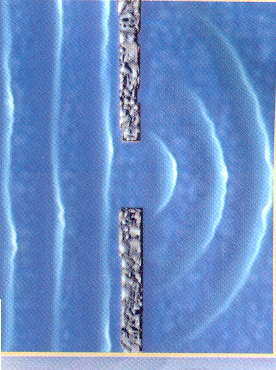Ppl on Physics forums tell me that calling it a particle is wrong & that "wave" is just an analogy. Its not a mechanical wave like the text books I have show the object traveling up/down. So if its not traveling in a physical wave up & down, than what is meant by the wavelength? & frequency?
The wiki says a bit about the photon being an oscillating wave of electric and magnetic fields. I have a hard time understanding that.
I think these analogies are the best we can do, other than study the mathematics in qm? So its probably pointless for me to try & understand it.
Any advice? My knowledge is pretty limited, but I find light fascinating.
The wiki says a bit about the photon being an oscillating wave of electric and magnetic fields. I have a hard time understanding that.
I think these analogies are the best we can do, other than study the mathematics in qm? So its probably pointless for me to try & understand it.
Any advice? My knowledge is pretty limited, but I find light fascinating.







